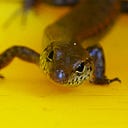Member-only story
Along the Beach
Shore plants hold their own
One of the plants in my collection is the Blue or Dallachy’s Banksia (Banksia plagiocarpa). This species is restricted to munamudanamy/Hinchinbrook Island and a small area of the adjacent mainland where it grows in heathland above 200 metres. The flowers are blue-grey, an unusual colour in banksias. My plant is yet to bloom, but I hope it will one day. I worry that it is getting too much water/too little water/not enough light/too many nutrients. Banksias can be fussy and I am a helicopter gardener.
The hills on which the Blue Banksia grows rise almost vertically from the shoreline. Below them, the narrow strip of sand above high tide is painted in a hundred shades of green. While the banksia is only found in one small area, the plants of the coastal dunes are more widely distributed.
Hinchinbrook Island lies close to the town of Cardwell in Far North Queensland. On 3 February 2011, Severe Tropical Cyclone Yasi made landfall not far to the north of Cardwell. It was a big storm. Yasi maintained its integrity for 22 hours after crossing, finally losing cyclone intensity about 600 km inland. Its long after-life as a low pressure system caused flooding and wind damage in the desert towns of Alice Springs and Coober Pedy, 1600 km from its crossing point.
